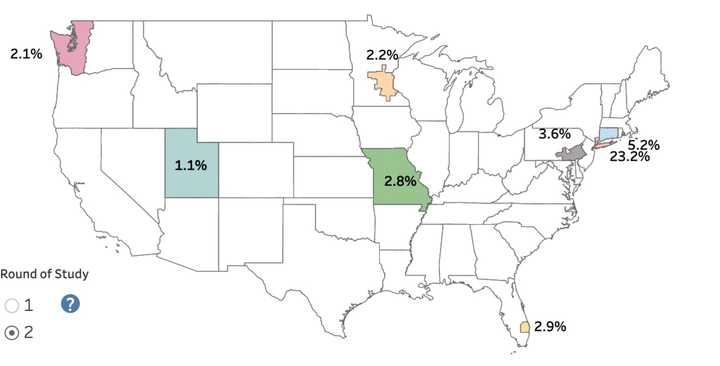The Centers for Disease Control and Prevention (CDC) teamed with commercial laboratories to find those who have tested positive for the virus in 10 specifically targeted regions.
Regions included in the survey: Connecticut, Louisiana, Minnesota, Missouri, New York City, Philadelphia, San Francisco, South Florida, Utah, and Western Washington State.
The survey includes people who had blood specimens tested for reasons unrelated to COVID-19, such as for a routine or sick visit during which blood was collected and tested by commercial laboratories in participating areas from each of the 10 sites.
The survey discovered that nearly a quarter of New York City, Long Island and Westchester residents who had blood surveyed by the CDC were found to have had the coronavirus.
In total, approximately 23 percent in the metro area who had blood drawn in late May had antibodies for COVID-19, according to the survey, which included the five boroughs, Nassau, Suffolk and Westchester counties.
The survey was the second of its kind from the CDC.
The first, which ended Sunday, May 3, found a citywide infection rate of 6.9 percent. The second survey was conducted between Thursday, May 21, and Tuesday, May 26.
A total of 1,116 samples were collected. The CDC said that it plans to collect upwards of 1,800 samples from each region every three to four weeks as researchers look to see what percentage of people tested already have antibodies against the virus.
The results reported by the CDC have been adjusted for false-positive and false-negative results.
The CDC made note that it is possible that antibody levels may decrease over time and that people who previously tested positive for the presence of antibodies may at some point test negative.
The CDC also cautioned that the survey doesn’t mean that people who tested positive for antibodies are immune to COVID-19.
“Further analysis is being done to evaluate how changes in seroprevalence estimates over time may be affected by specimen collection from somewhat different populations or geographic areas within each site, as well as random variation,” the CDC said.
“It is also possible that antibody levels may decrease over time, and some people who previously had detectable (COVID19) antibodies may no longer have antibody evidence of past infection.”
Click here to follow Daily Voice Newburgh and receive free news updates.
